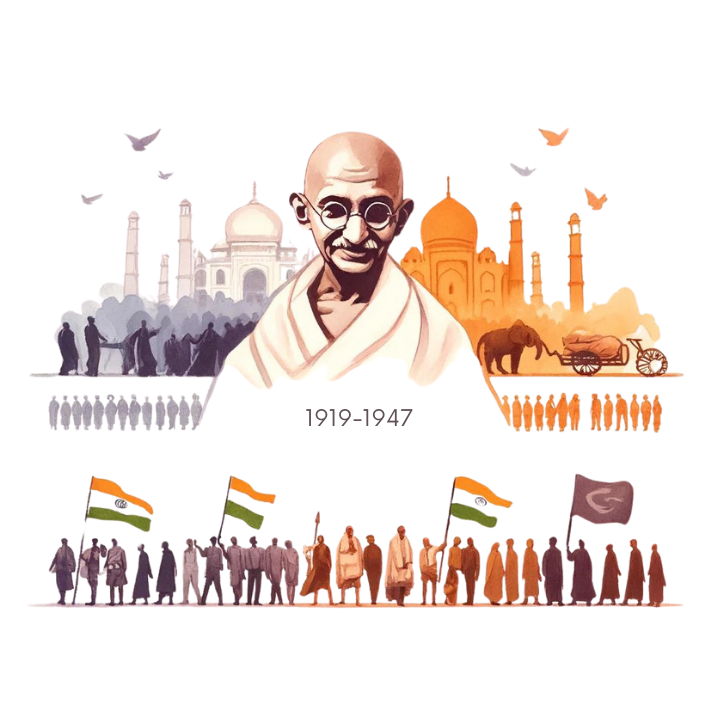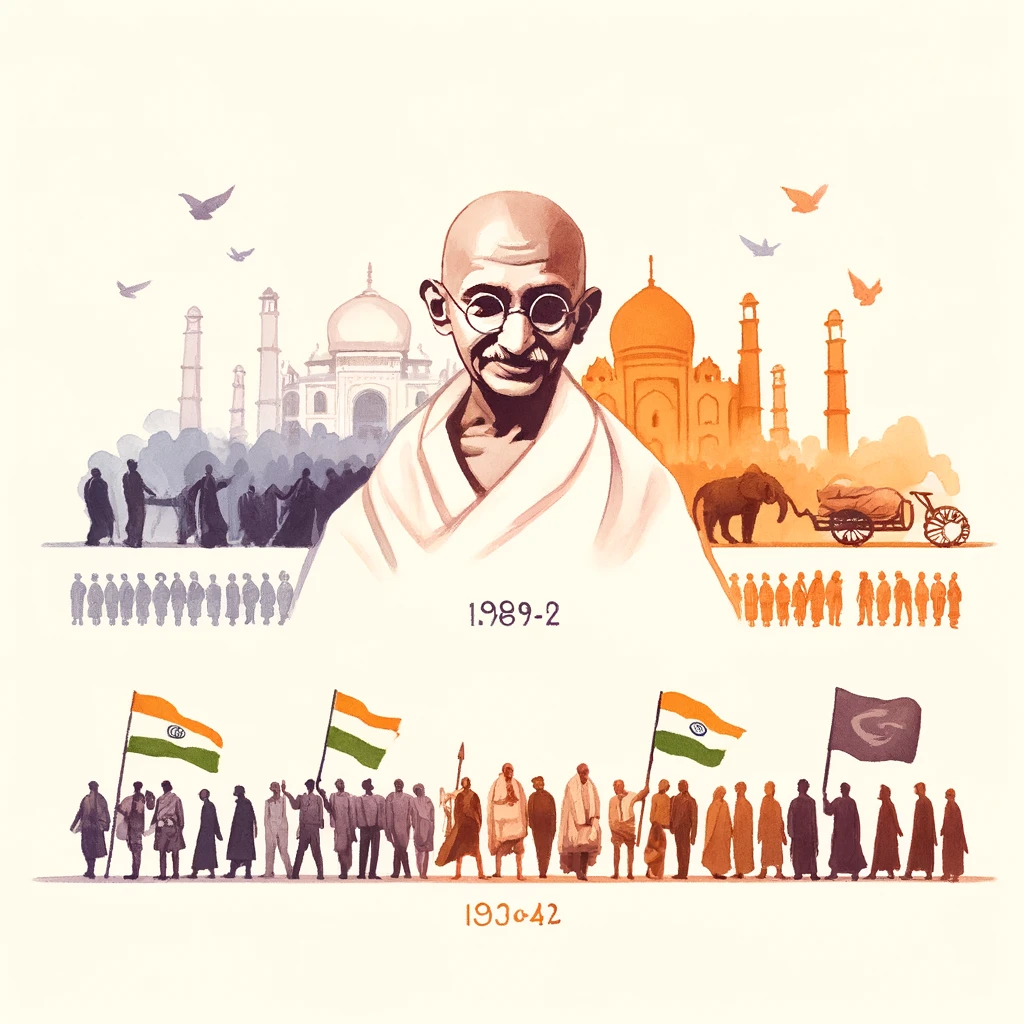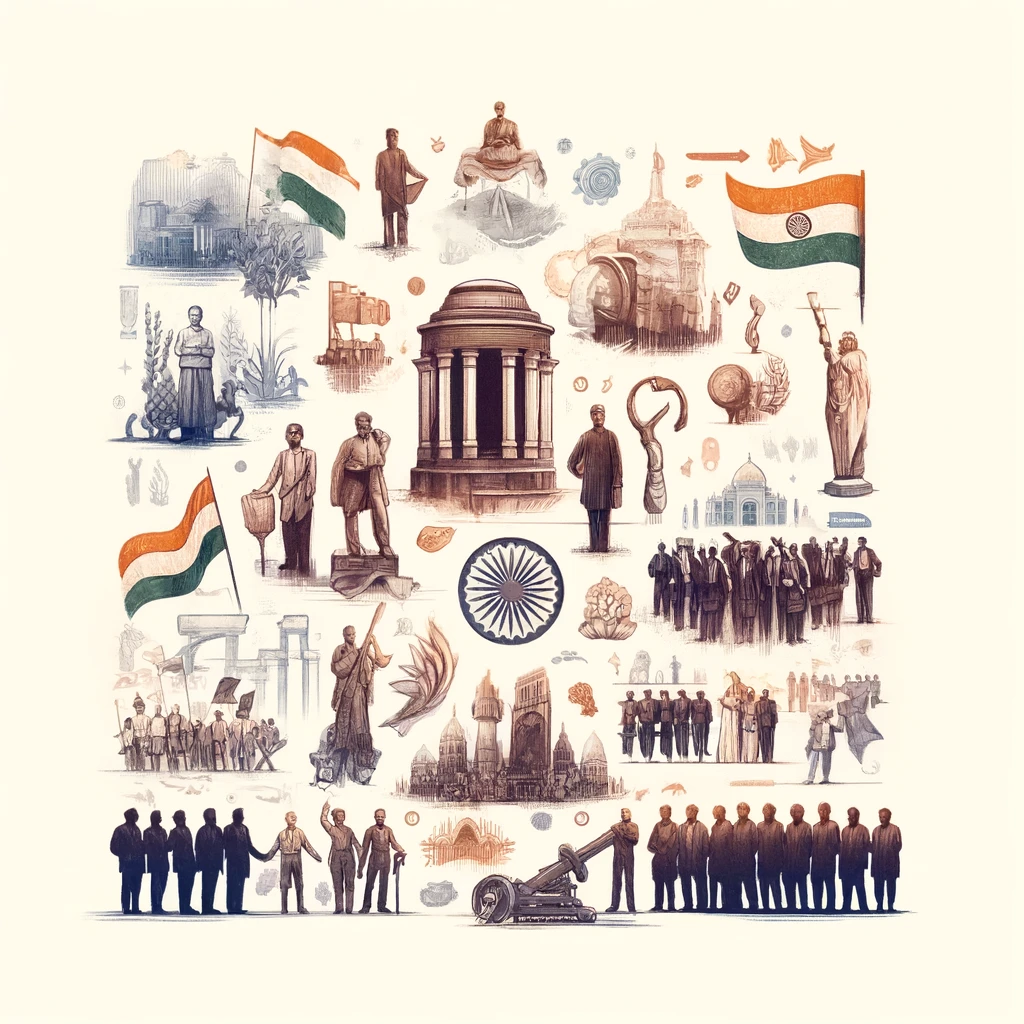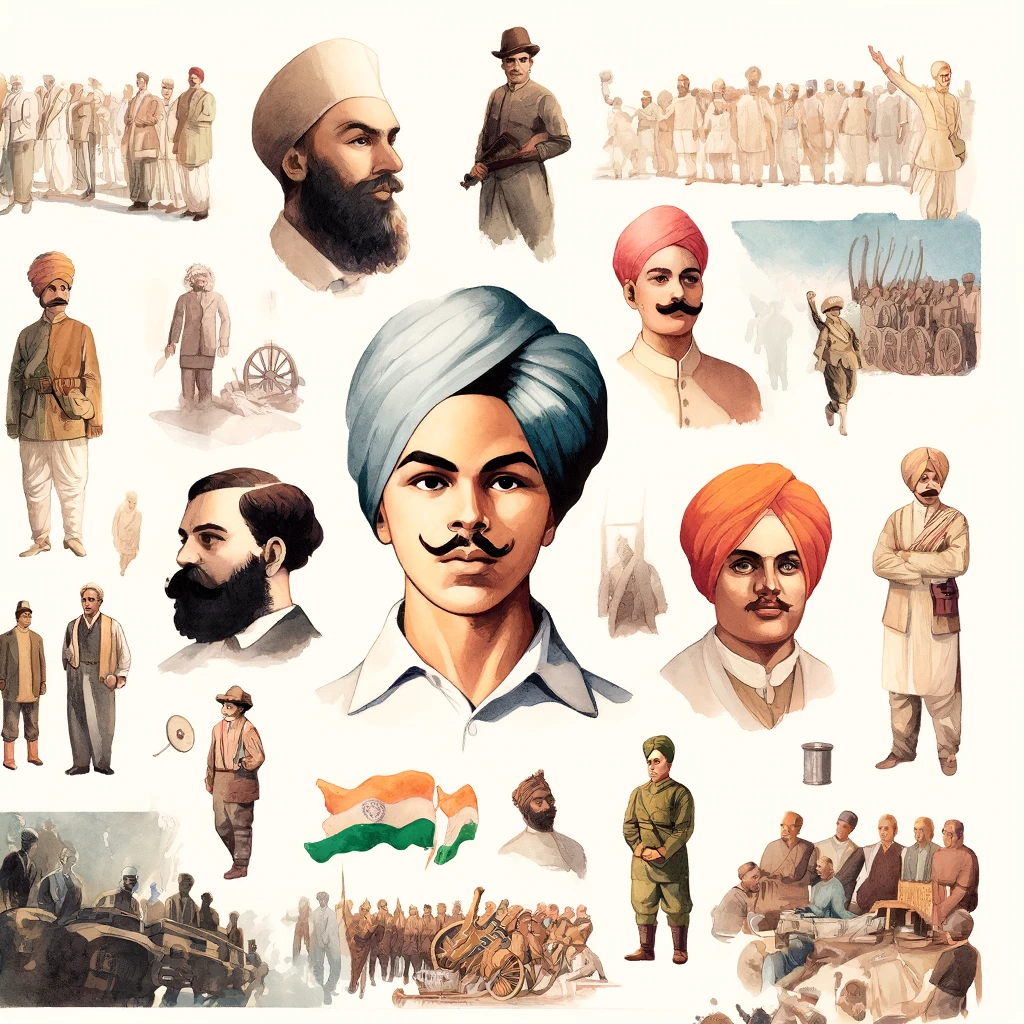The Gandhian era started from 1919 to 1947. It was marked by significant movements that shaped India’s struggle for independence. Mahatma Gandhi emerged as the foremost leader of the Indian National Congress, advocating for non-violent resistance and mass mobilization. Three major movements during this period were the Non-Cooperation Movement, the Civil Disobedience Movement, and the Quit India Movement.

Non-Cooperation Movement (1920–22)
Background
- The Non-Cooperation Movement was launched in response to the Jallianwala Bagh massacre in 1919 and the harsh repressive measures that followed. Additionally, the discontent with the Rowlatt Act and the failure of the Montagu-Chelmsford Reforms to meet Indian aspirations contributed to the growing unrest.
- Gandhi called for the movement during the Nagpur session of the Indian National Congress in 1920, advocating for the rejection of British institutions and goods.
Objectives
- The main objective was to attain Swaraj, or self-governance,e by non-violent means.
- It aimed to undermine the economic and administrative structure of British rule by boycotting British goods, institutions, and services.
Key Features
- Boycott of British Institutions: Indians were urged to withdraw from government schools, colleges, law courts, and legislative councils.
- Swadeshi: Promoting the use of Indian-made goods and encouraging the revival of traditional industries.
- Non-Violent Protest: Gandhi emphasized non-violence and civil disobedience as the core principles of the movement.
Major Events
- The movement saw widespread participation, including students leaving schools and colleges, lawyers giving up their practices, and the boycott of foreign goods.
- The Khilafat Movement, led by Muslim leaders to protest against the dismemberment of the Ottoman Empire, was aligned with the Non-Cooperation Movement, adding a communal harmony dimension to the struggle.
Impact
- The movement marked the first large-scale participation of Indians in the nationalist struggle. It unified people across different regions and communities in a common cause.
- Although the movement was called off by Gandhi in 1922 following the violent incident at Chauri Chaura, it significantly weakened British control and demonstrated the potential of mass mobilization.
Civil Disobedience Movement (1930-34)
Background
- The failure of the Simon Commission (1927) and the subsequent rejection of Indian demands for constitutional reforms led to growing dissatisfaction.
- The movement was launched by Gandhi with the iconic Dandi March in 1930. It is where he and his followers marched to the Arabian Sea to make salt, defying the British monopoly on salt production.
Objectives
- The primary aim was to achieve complete independence (Purna Swaraj) and to challenge British authority through non-violent civil disobedience.
Key Features
- Salt Satyagraha: The movement began with the Salt March, symbolizing the defiance of British laws.
- Boycott: Continued boycott of British goods, services, and institutions.
- Non-Payment of Taxes: Refusal to pay taxes, particularly land revenue.
Major Events
- The movement spread rapidly, with millions of Indians participating in making salt, boycotting British goods, refusing to pay taxes, and participating in peaceful demonstrations.
- The British responded with widespread arrests, including that of Gandhi and other Congress leaders.
Impact
- The Civil Disobedience Movement was instrumental in drawing international attention to the Indian struggle for independence.
- The movement led to the Gandhi-Irwin Pact in 1931, which saw the release of political prisoners and the temporary suspension of the movement in exchange for negotiations at the Round Table Conferences in London.
- Although the movement did not achieve immediate independence, it significantly undermined British authority and strengthened Indian resolve.
Quit India Movement (1942)
Background
- The Quit India Movement was launched during World War II when the British sought Indian support for the war effort without promising immediate independence.
- Moreoever, the failure of the Cripps Mission in 1942, which offered limited self-governance, further fueled Indian frustration.
Objectives
- The movement aimed for immediate British withdrawal from India. It was rooted in the belief that the British could no longer govern India effectively, especially during the wartime crisis.
Key Features
- Mass Mobilization: Gandhi called for “Do or Die,” urging the masses to engage in non-violent resistance and mass protests.
- Strikes and Demonstrations: The movement saw widespread strikes, demonstrations, and acts of sabotage against British infrastructure.
Major Events
- The British government preemptively arrested Gandhi and other top Congress leaders, leading to spontaneous uprisings across the country.
- Despite the absence of central leadership, the movement saw active participation from all sections of society, including students, workers, and peasants.
Impact
- The Quit India Movement was one of the most intense and widespread revolts against British rule. It demonstrated the deep-rooted desire for independence among Indians.
- The movement faced brutal repression from the British, with mass arrests, public flogging, and firing on unarmed protestors. However, it significantly weakened British control and legitimacy.
- The movement’s legacy continued to inspire the post-war negotiations that eventually led to Indian independence in 1947.
Conclusion
The Gandhian era (1919-1947) was marked by transformative movements that galvanized the Indian populace and weakened British colonial rule. The Non-Cooperation Movement, the Civil Disobedience Movement, and the Quit India Movement were pivotal in mobilizing mass resistance, fostering national unity, and laying the groundwork for India’s eventual independence. Understanding these movements is crucial for comprehending the strategies and sacrifices that shaped India’s freedom struggle.



